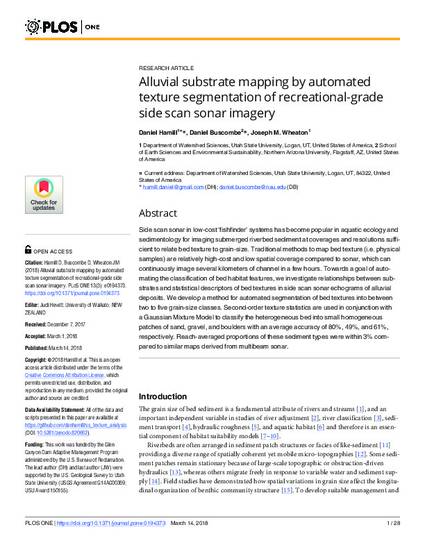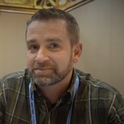
Article
Alluvial substrate mapping by automated texture segmentation of recreational-grade side scan sonar imager
PLoSONE
(2018)
Abstract
Side scan sonar in low-cost ‘fishfinder’ systems has become popular in aquatic ecology and sedimentology for imaging submerged riverbed sediment at coverages and resolutions sufficient to relate bed texture to grain-size. Traditional methods to map bed texture (i.e. physical samples) are relatively high-cost and low spatial coverage compared to sonar, which can continuously image several kilometers of channel in a few hours. Towards a goal of automating the classification of bed habitat features, we investigate relationships between substrates and statistical descriptors of bed textures in side scan sonar echograms of alluvial deposits. We develop a method for automated segmentation of bed textures into between two to five grain-size classes. Second-order texture statistics are used in conjunction with a Gaussian Mixture Model to classify the heterogeneous bed into small homogeneous patches of sand, gravel, and boulders with an average accuracy of 80%, 49%, and 61%, respectively. Reach-averaged proportions of these sediment types were within 3% compared to similar maps derived from multibeam sonar.
Disciplines
Publication Date
2018
DOI
https://doi.org/10.1371/journal.pone.0194373
Citation Information
Joseph M. Wheaton. "Alluvial substrate mapping by automated texture segmentation of recreational-grade side scan sonar imager" PLoSONE Vol. 13 Iss. 3 (2018) p. e0194373 Available at: http://works.bepress.com/joseph_wheaton/151/
